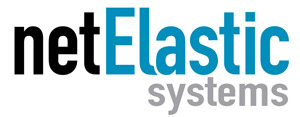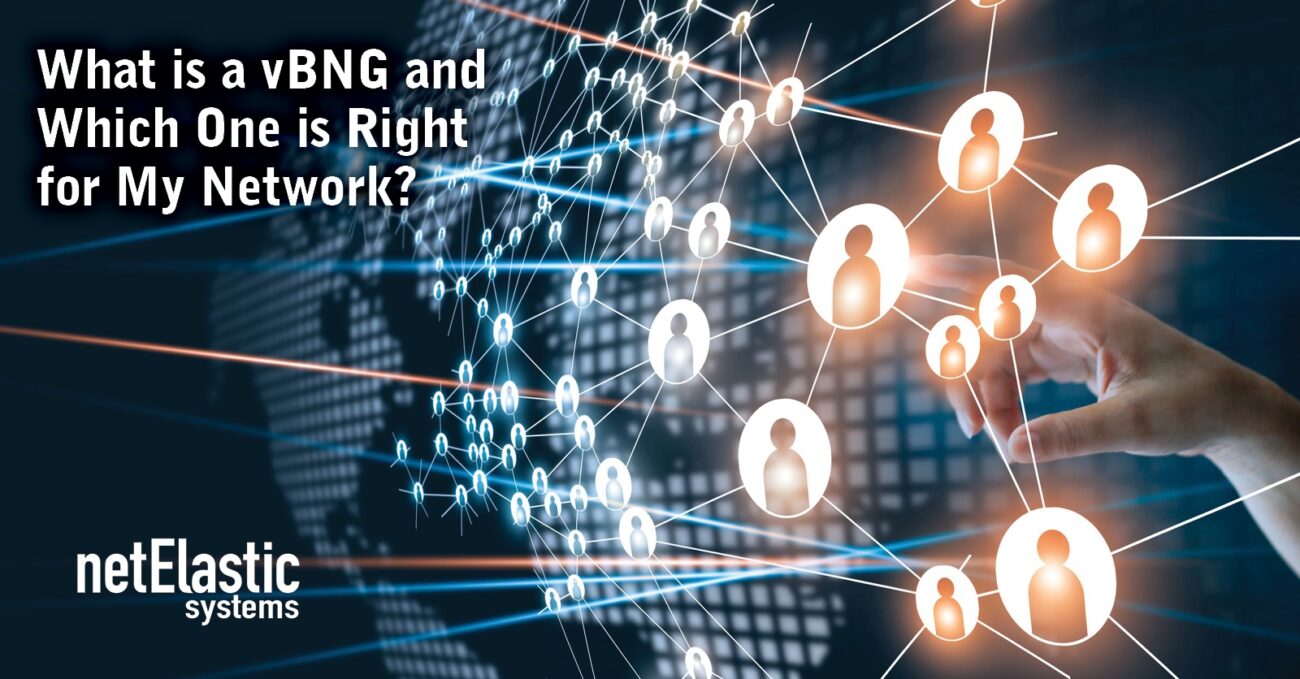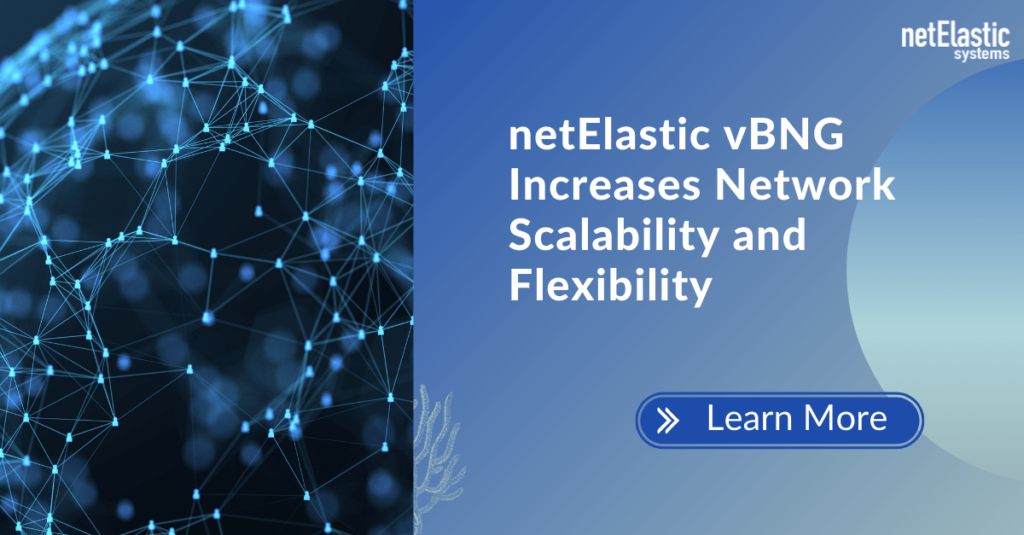Broadband access has become a critical component of our daily lives. According to OpenVault's latest Broadband Insights report, the monthly average data consumed by subscribers reached a new high of 641 GB per month and should climb to 700 GB by the end of 2024. The percentage of power users consuming 1 TB or more monthly also increased to 21.6%
Given the increasing importance of broadband access, what is a vBNG, and which one is best for my network?
Broadband Network Gateways
Broadband network gateways (BNGs) are critical network components. They are the access points for connecting individuals (subscribers) to the broadband network. The BNG aggregates traffic from many subscribers and routes it to the service provider's network.
Similar to your home router that provides network access for all your devices, a BNG provides access for large groups of homes and small businesses. BNGs connect to an external RADIUS server that provides authentication, authorization, and accounting functions. This helps secure networks against unauthorized access. BNGs also use PPPoE and DHCP servers to assign IP addresses. Once securely connected, a subscriber can access the broadband services delivered by their provider.
Broadband service providers traditionally bought hardware-based BNGs from large router manufacturers like Cisco and Juniper. However, these proprietary solutions suffer from high costs and lack scalability. Lower-priced hardware routers, such as those from MikroTik, are challenging to scale.
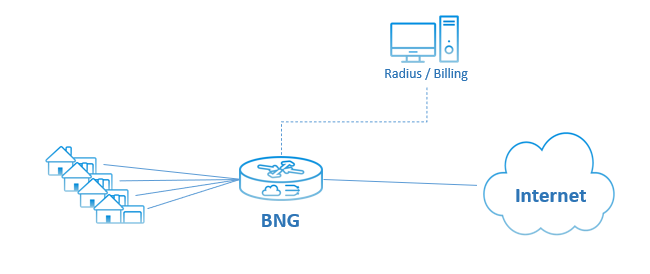
What is a vBNG?
Unlike a traditional BNG, a software-based (or virtual) BNG separates the network functionality from the hardware. vBNGs offer the same functionality as conventional hardware-based BNGs, but their software-based nature adds greater scalability and flexibility.
Separating the network services from the hardware makes it easier to expand network capacity. It also provides internet service providers (ISPs) with a choice of hardware vendors. ISPs can now use x86-based servers with much lower costs (than proprietary hardware). vBNG solutions also have a software architecture with separate control and data planes so that the data plane can be scaled independently from the control plan, allowing for even more significant capacity expansion.
Purchasing and installing hardware routers is time-consuming. And making changes to hardware-based BNGs requires long lead times since hardware appliances must be configured one at a time.
vBNGs are easy to deploy since they’re software-based. When additional capacity is required, the changes can be made in minutes, not days or weeks.
Which vBNG is Best for My Network?
There are multiple vBNG solutions with different features and different price points. The key is to focus on the solution that's best for you. Large telecom carriers may be interested in vBNGs with the most advanced features. At the same time, medium to smaller ISPs may be more interested in vBNGs that are easy to scale, easy to manage, and affordable.
netElastic vBNG
netElastic, an innovative software company, developed one of the industry’s first software-based BNGs. Since its launch, netElastic vBNG has become an industry leader using software-defined networking (SDN) technology to deliver market-leading scalability and flexibility with an optimized data plane and highly scalable design.
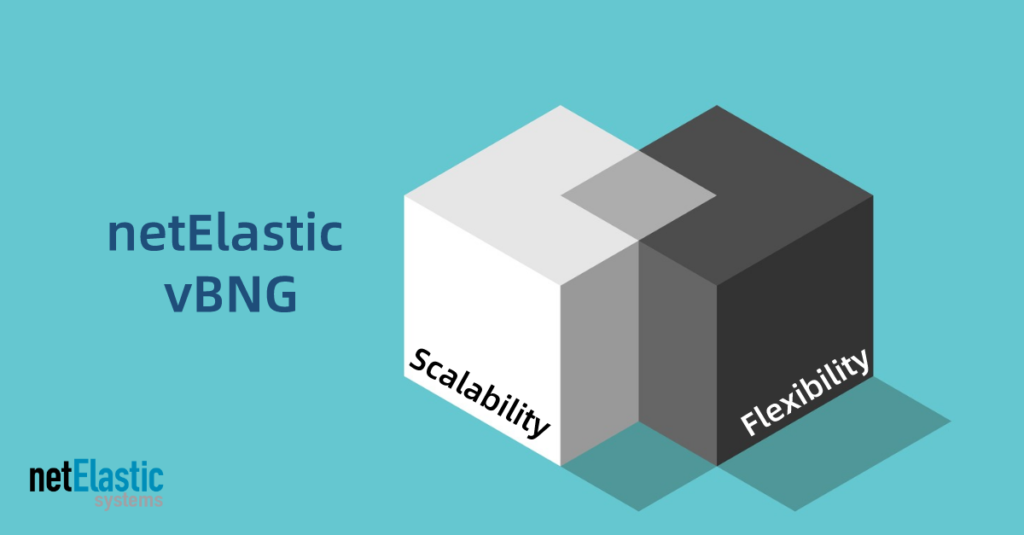
netElastic vBNG runs on x86-based servers, creating significant cost savings over proprietary hardware solutions. BNG also uses the ever-increasing power of white-box servers to provide the elastic scalability broadband providers need. As a testament to its scalability, netElastic supports very small subscriber bases up to hundreds of thousands of subscribers.
Easy to Manage
Managing hardware-based routers can be challenging. In contrast, netElastic's software-based BNG can be easily configured, deployed, and managed.
Many service providers desire a single pane of glass view into their BNGs and network. To meet this need, netElastic developed Router Manager, an intuitive web-based application that allows providers to configure their vBNGs quickly. It also monitors how the network and vBNGs are performing. Router Manager provides detailed information down to the subscriber level. This simplifies troubleshooting and enables support staff to quickly identify and resolve customer issues.
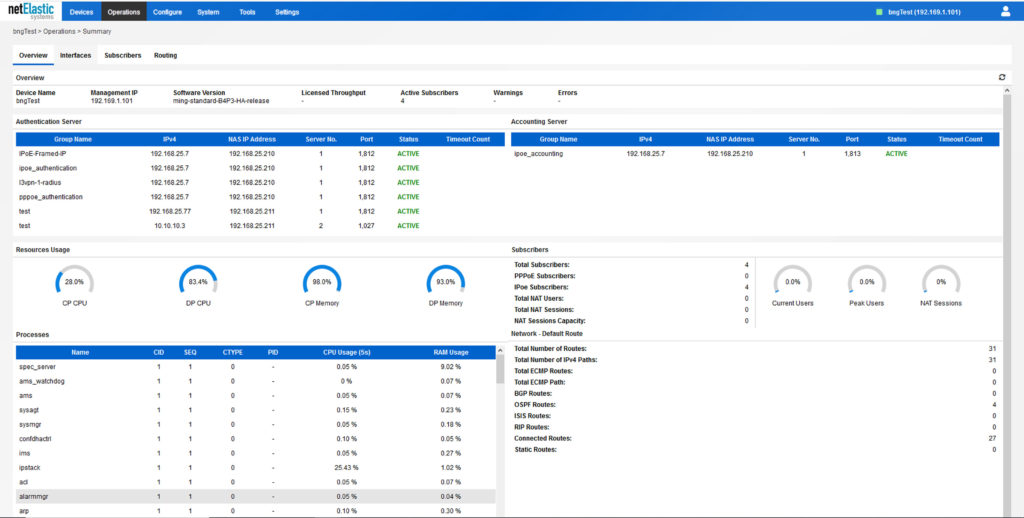
Don’t Forget Performance
To demonstrate the performance of a virtual BNG solution, Intel and netElastic tested the netElastic vBNG on 4th Gen Intel Xeon Scalable processors. The test results showed netElastic vBNG achieved up to 1 Terabit of throughput, depending on packet size, with 128,000 attached devices. This is a new level of performance for vBNGs.
Now is the Time for a vBNG
The future network is software-based, and more and more broadband providers are turning to software-based BNGs to achieve greater network scalability and flexibility. Not to mention lower costs.
netElastic was one of the first vendors to develop a software-based broadband network gateway (vBNG) and has been focused on vBNGs ever since. Today, netElastic vBNG is deployed globally and is widely recognized for its market-leading performance and scalability.
To learn more, please read the case study on how service provider Softcom Scales with netElastic vBNG
